Why sail to Caribbean?
Thanks to steady trade winds, hot and stable weather, countless beautiful islands, lovely people, good food and great diving, the Caribbean Sea is the ideal spot for yachting. The best time to sail is from mid-November to the end of May. When it is cold at home, it is hot in the Caribbean, with reggae, cocktails, sandy beaches and palm trees. so why not set sail for this idyllic destination.
- Coral reefs and a diverse underwater world (corals, rays, dolphins, flying fish, a huge number of colourful tropical fish, sharks, such as Caribbean reef shark, black shark, or tiger shark).
- Hundreds of islands and romantic bays, white sandy beaches surrounded by coconut palms and clear turquoise blue waters.
- Fishing (the most frequent catches are tuna, barracuda and dorado, with the exception of boat fishing for swordfish, rays or sharks, the most important is tarpon fishing).
- Nature Reserves, wild tropical rainforests with numerous waterfalls, lush vegetation and exotic flowers (oleanders, hibiscus, magnolia, anthuria, etc.) and abundant wildlife (monkeys, turtles, two-metre long iguanas, hummingbirds).
- Cocoa, coffee, sugar and tobacco plantations, many kinds of spices, fruit and vegetables (papaya, avocado, mango, pineapple, coconut and banana).
- White Caribbean rum, reggae and hot salsa.
- Countless nightclubs, discos and other entertainment (steel band, dance clubs, live music).
Ask me about sailing in the Caribbean.
International Numbers:
UK: +44 208 08 98 515
DE: +49 211 54 69 22 23
CZ: +420 222 528 222
RU: +7 499 609 4515
SK: +421 232 195 340
Leave your contact details below:
Areas for sailing in the Caribbean Sea
Grenada
Dubbed the “Spice Isle”, Grenada is a lush, green, mountainous island with a wild jungle interior and true Caribbean life on the coast. The sea is warm and fantastic for diving, particularly the coral reef on the windward side of the island which is abundant in marine life. Grenada is more suitable for experienced sailors and is ideal for one-way sailing trip to St. Vincent or St. Lucia.
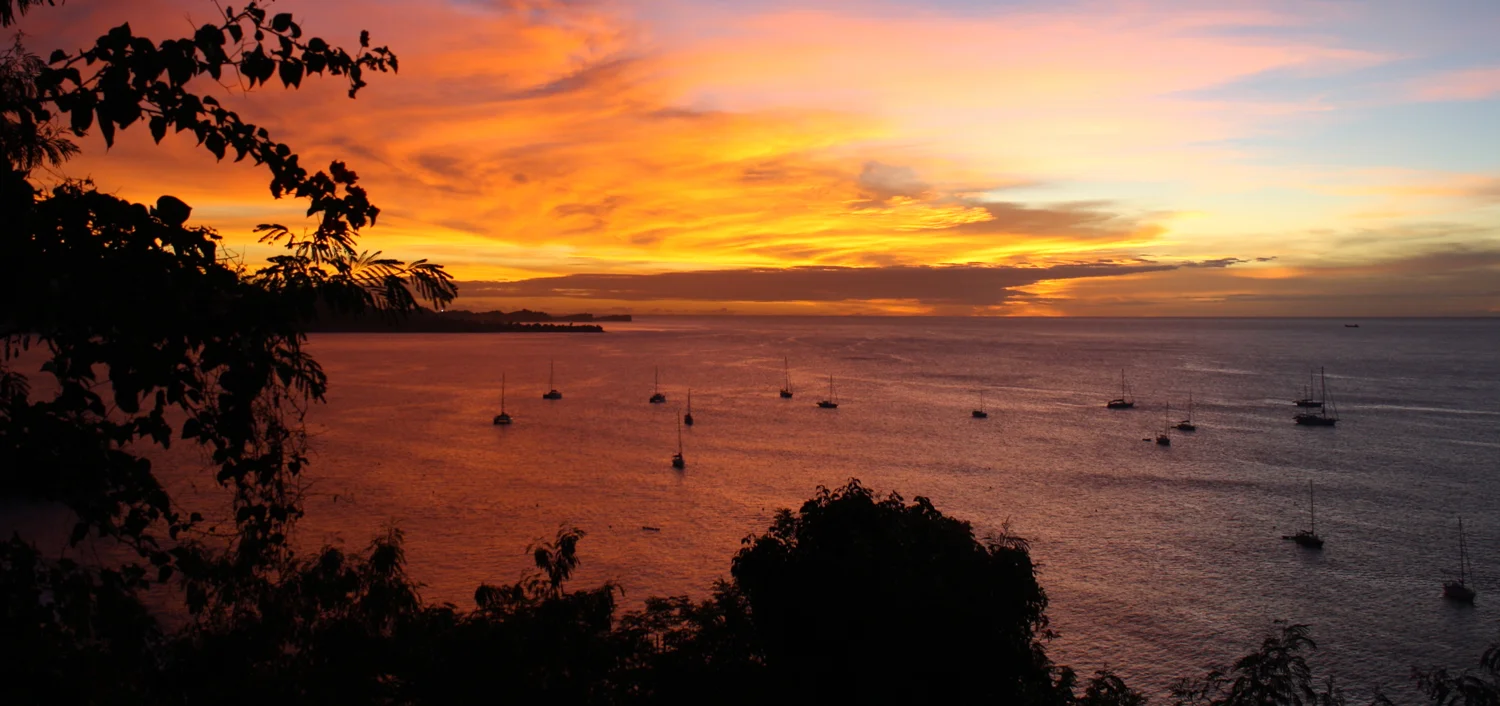
Saint Lucia
The diamond of the Caribbean, this volcanic island boasts a rainforest, sulphur springs and thermal waterfalls. Its permanent sweeping winds, unrivalled panoramas, picturesque harbours, inland voyages of discovery, friendly restaurants and Caribbean cuisine are truly captivating. Saint Lucia, with an area of 616 km squared, has a population of just 174,000 and the head of state is Queen Elizabeth II. The main export item is bananas, making agriculture the second most important livelihood, right after tourism.
Experience the sweeping winds between the islands and ocean waves, or enjoy the tranquillity of the windward shore, palm beaches, picturesque bars, and undemanding but magical snorkelling. This is the ideal place to head out from to nearby islands such as St Vincent, Tobago Cays and Mustique.
Saint Lucia has a variety of flora and fauna. If you’re lucky, you’ll encounter the Amazona Versicolor (the Saint Lucia parrot) which was on the brink of extinction in the 1970s due to hurricanes and illegal trade. Thanks to a conservation program to save the species, its numbers have been on the rise again. As it is endemic to the island of St. Lucia, it has become its national symbol.
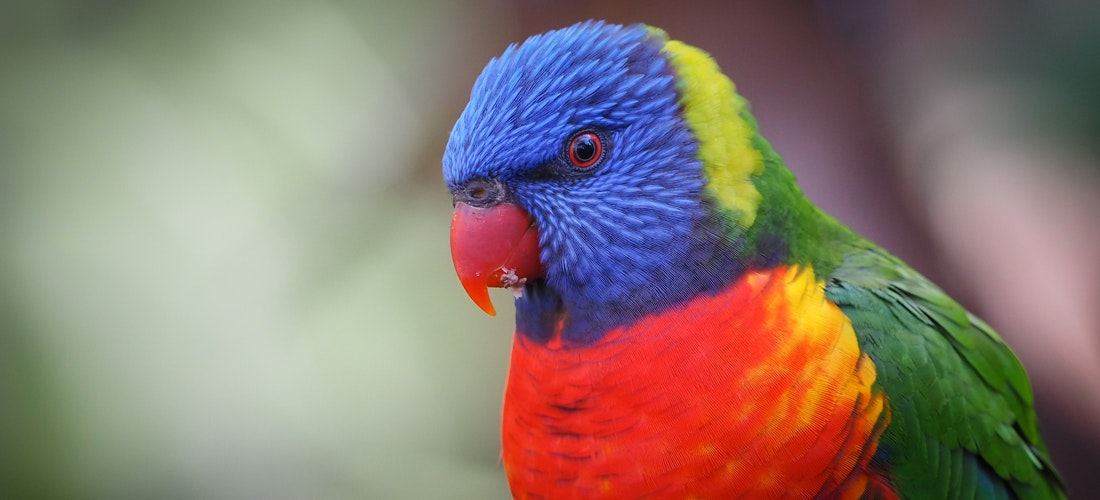
Nature lovers will find plenty to interest themselves here. In 2004, the two peaks of Gros and Petit Pitons made it to the UNESCO World Heritage List. Formed 40,000 years ago, today they cover the majority of a large, protected area of land.
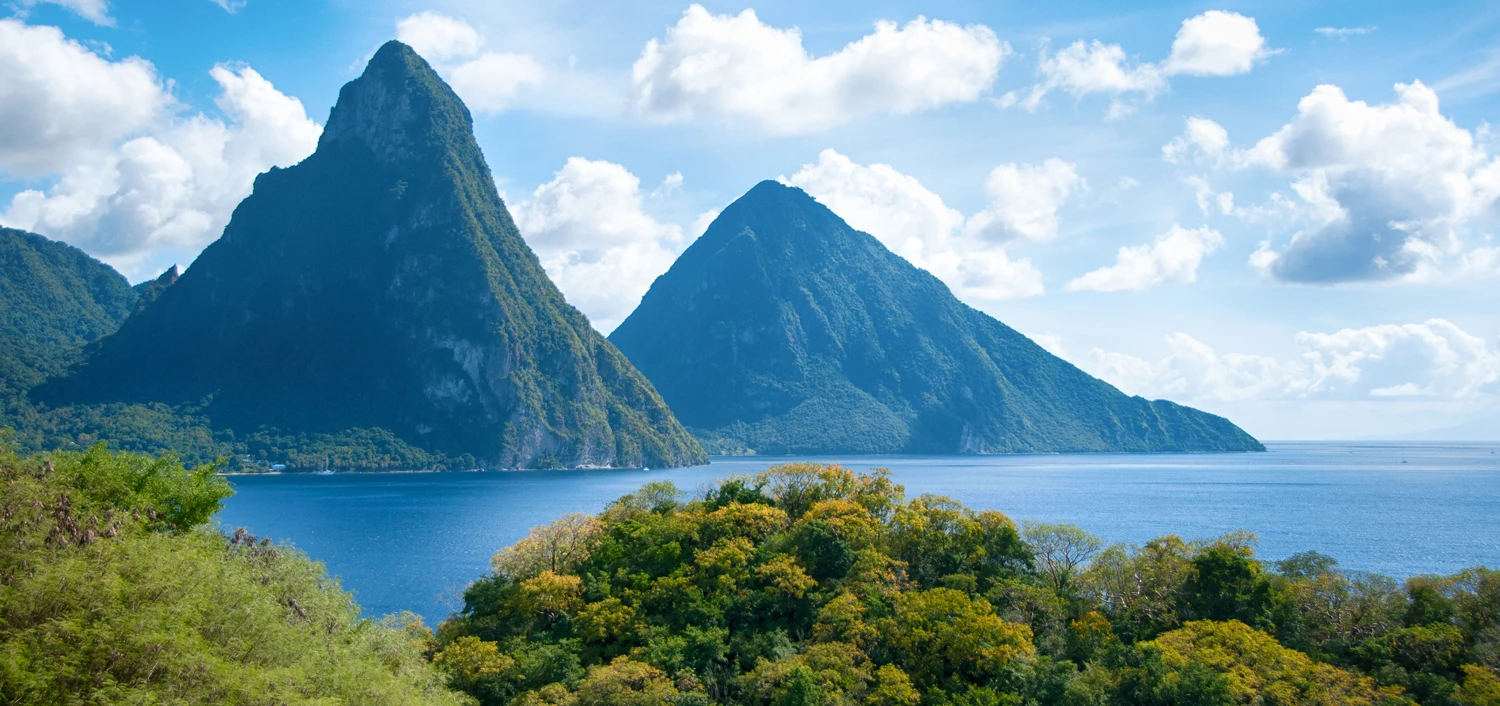
Martinique
French culture in the Caribbean Sea combined with white beaches and coral reefs, and the birthplace of Caribbean rum. Sail in the trade winds between tropical paradises where the French and Caribbean cultures blend. On Martinique, you will experience the undiluted Caribbean, which you won’t want to leave. But if you do, to the south are Saint Lucia and Grenada, and the Dominican Republic to the north. These are all tropical islands straight out of the Pirates of the Caribbean.

Antigua
Antigua is the perfect place to combine Caribbean parties, challenging sailing, exotic wildlife, and white sandy beaches (there are exactly 365 beaches on the island, one for every day of the year). A warm sea and steady winds make Antigua the ideal yachting location.
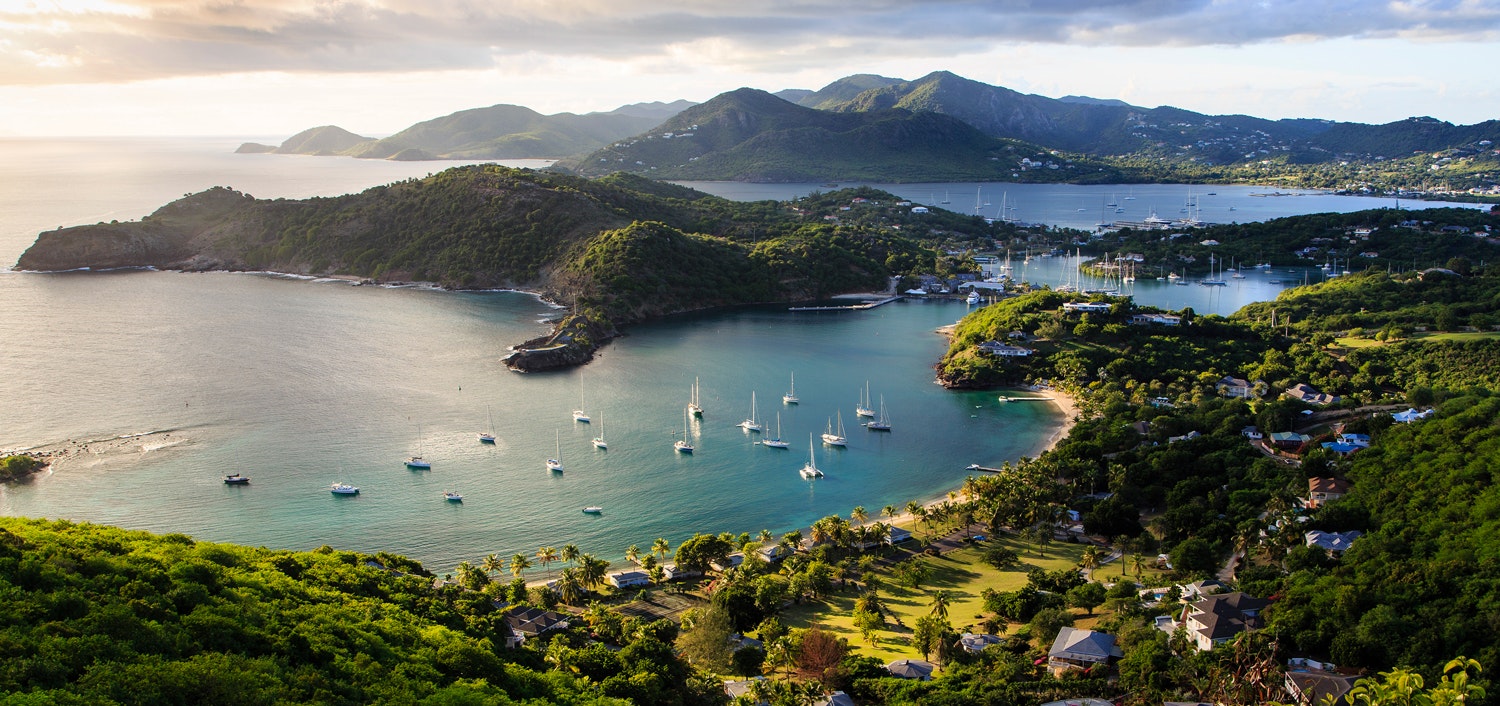
St Martin
Spanish and French influences blended with Caribbean culture and the reputation as a party island, make St Martin the perfect place for excellent Caribbean cuisine, live music and unforgettable entertainment. The trade winds in the open passages offer exciting yachting for even the most experienced sailors.
British Virgin Islands
One of the most beautiful yachting locations in the world. A unique location in the Caribbean, providing yachting in a huge, enclosed coral lagoon. Sweeping trade winds and, thanks to the coral reef, small waves allow for easy sailing between islands just a few kilometres apart. Despite its popularity, this yachting location is also rugged, providing privacy for even a large number of sailboats.
Cuba
Communism in the Caribbean with its own inimitable style. This open-air museum of socialism in a tropical paradise can perhaps only be understood first-hand, by someone who has lived under a communist regime. A unique destination with pristine seas, plenty of fish but a lack of restaurants. Cuba simply has fantastic, untouched nature that cannot be found anywhere else. Take a look at our boat rental deals in Cuba.

The Bahamas and Abacos
Cruise from one beach with desert dunes to another in crystal-clear waters. Undemanding yachting suitable for novices with plenty of good anchorages make it ideal for an easygoing and relaxing boating holiday. There’s some great snorkelling here too, in shallow waters with an abundant marine life.
Belize
Few people know that after the Great Barrier Reef, the coral reef around Belize is the second largest coral reef in the world. Belize is a little-known yachting paradise. This part of Central America is untouched, dotted with numerous low-lying palm islands and bars where you can order crayfish for the price of lamb in Croatia. Old Indian civilizations left ancient monuments here, hidden away in the surrounding primeval forests. In short, this land is truly fascinating and unspoilt.
Weather and climate
The NE trade winds blow over most of the Caribbean, bringing relatively stable weather with them, apart from seasonal tropical storms. During the winter months, visibility is mostly very good. During the summer and autumn months, temperatures rise along with humidity and cloud cover, while heavy showers and storms are very frequent. The tropical season in the Caribbean is usually from June to mid-November, but in exceptional cases, tropical cyclones may even appear in May and December. The greatest risk of tropical cyclones is in August, September and October. This period averages around 12 tropical storms with a force of 8 or more on the Beaufort scale (BFT) and half of them reach hurricane strength. Visibility is often reduced due to frequent showers and occasional mist.
The Antilles Current flows in a NW direction on the Atlantic side of the Lesser Antilles and combines with the Gulf Stream north of the Bahamas. The strength of the current is between 0.5-1.2 kn.
Best sailing dates
The best time to sail is from February to May, which is high season in the Caribbean. November, December, January, and the start of June are also suitable times to sail. Mid-June to the end of October is hurricane season. You can also sail in the Caribbean at this time, but it is very hot and often rains. And, of course, you would need to monitor weather forecasts so that you are not caught unprepared for a hurricane, which might turn your relaxing voyage into catastrophe.
Winds
From December to May, winds blow steadily from the northeast, making this period the best for yachting in the Caribbean. Winds can be a very strong (5-6 BFT) between the islands, so this is not yachting for beginners. In winter, systems of high air pressure often appear to the northeast of the Leeward Islands. If these get stronger, they can create sharp, easterly winds (known locally as the "Christmas Winds") with a force of 5-6 BFT (20-25 kn) and even sometimes 6-7 BFT (25-30 kn). In summer and autumn, the winds turn eastward, become unstable and weaken to an average of 3 BFT (7-10 kn) or less, and can blow from different directions. There is a high probability of tropical storms and hurricanes here.
Which boat is most suitable for sailing in the Caribbean?
Definitely a catamaran. The weather is always hot in the Caribbean and you will be spending most of your time above deck. With a catamaran, you’ll find almost everything you need on the upper deck, apart from cabins and toilets. There’s a lounge on deck with a galley connected by large doors and a spacious cockpit. There is plenty of space there for sunbathing, including comfortable nets to lie on between the hulls. A catamaran is simply the best choice for a relaxing sailing holiday in the tropics.
Anchoring
In the Caribbean, most winds blow from the same direction. Boats are equipped with good anchors and moor either at the beaches, or bows-to with the stern moored to shore with a long rope. In inhabited areas, a local will gladly help you moor to shore for a few Caribbean dollars. It is best to accept their help, as it is part of the local custom. If you refuse, you risk insulting the locals.
What to look out for
Sailing in the Caribbean is permitted only during the daytime. Anyone who has seen the deep black darkness that takes over when there is no moon, understands the reasons for this very well. There are not many navigation lights in the Caribbean, and there are quite a few rocks and reefs which are at best marked with wooden stakes, meaning they are invisible at night.
If you plan to sail near coral reefs, always sail when the sun is high and read the water. Have someone at the bow, looking into the water and making sure there is enough depth. Don’t rely on maps, whether paper or electronic versions, near or around coral reefs.
Customs formalities
The individual islands in the Caribbean are usually independent countries. This means that when sailing between them, you must frequently register. And you really must register or risk a hefty fine and an unpleasant situation.
Gastronomy
The islands you visit in the Caribbean have for the most part, been influenced by American and French cuisine. On Guadeloupe and the surrounding islands, you can enjoy creole specialities such as Creole Sauce (sweet and sour), Boudins (small dark sausages), Accras (fried cod fritters), Boukit (a sort of fried sandwich), and Agoulou (a grilled sandwich mostly filled with ham, cheese, meat and eggs).
Bananas used for cooking are also a local speciality. A little larger than conventional bananas, these are fried and added to the main meal and known as "plantain" in French.
Everyone should take advantage of their time in the Caribbean by sampling some exotic fruit. What about trying some guava or passion fruit? We all know what a mango is, but it is so much tastier in the Caribbean. Starfruit, though, is little-known to most. It is shaped like a star and the locals make a superb jam from it.
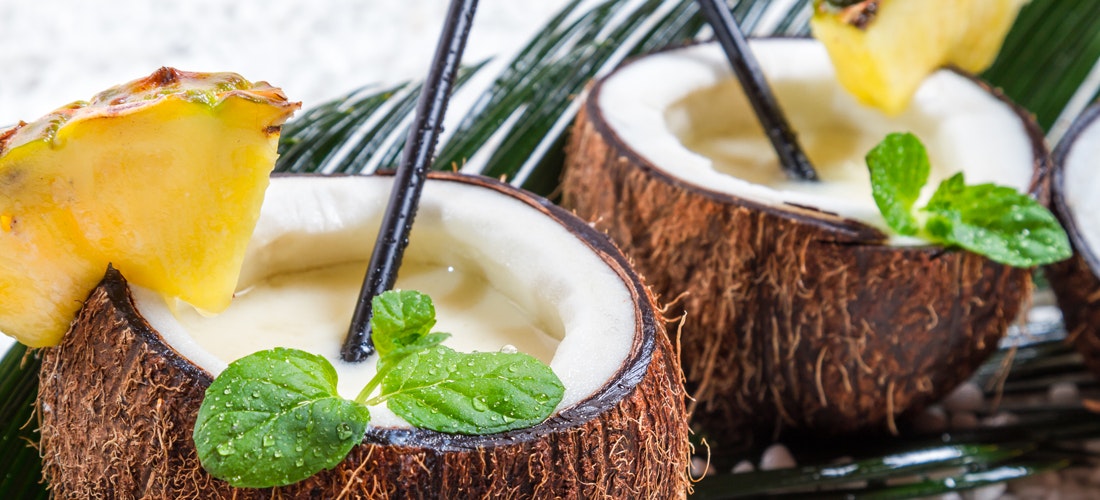
Naturally, white rum is an inherent part of the Caribbean, the most celebrated being the rum of Martinique. This white rum has an alcohol content between 40% and 60% and this is why it is most often served in cocktails such as Piña Colada, Cuba Libre, and the very popular aperitif, Ti' Punch (white rum with lime and cane sugar). These are basically similar ingredients to those used in a Brazilian caipirinha, but how it is served is different. Don’t forget to try Planteur - a liqueur from white rum and the juices of several different exotic fruits.
Fishing
Fish in the Caribbean are still plentiful, and a good fisherman can catch enough fish for the entire crew. Predatory fish are caught here on bait dragged behind the boat (tuna, golden dorado and so on). Harpooners can also enjoy some wonderful hunting here at the edges of the islands, where sea currents provide nutrients for an abundance of fish. But beware of the strong currents!
Contact yachting°com today about your next sailing holiday in the Caribbean or browse available yachts below.
Ask me about sailing in the Caribbean.
Write us and we will contact you:
International Numbers:
UK: +44 208 08 98 515
DE: +49 211 54 69 22 23
CZ: +420 222 528 222
RU: +7 499 609 4515
SK: +421 232 195 340
